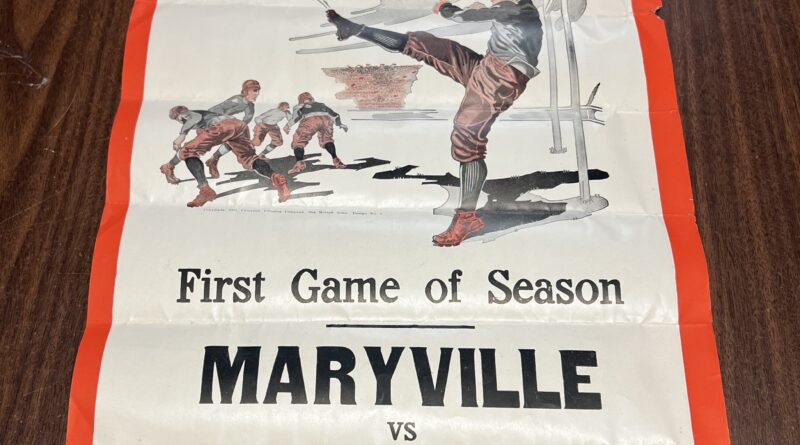A Rich History of Athletics: Examining the MC Rivalries of the Last 150 Years
At a small liberal arts school like Maryville College, athletics can sometimes be overlooked.
The famous rivalries between the D-I schools of the region often trump the competitors for a school like MC. While it may not be recognized off campus, MC has a rich history of athletic involvement in East Tennessee.
This dates back to the 1870s, with documented records of competitive athletics and teams at MC. The College also makes a claim to fame through alum and coach Kin Takahashi’s introduction of football to East Tennessee and the creation of the MC Football Team, two years prior to the University of Tennessee.
“Kin Takahashi brought football to East Tennessee,” paving the way for UTK football, said Maryville College Archivist Amy Lundell.
In the early years of collegiate athletics, the competitors and rivals consisted of any school or organization that had a team to play.
According to John Painter, Assistant Athletics Director for Communications, a “rival” tends to be a competitor for a championship.
As the first competitive football in the region, the schools that had teams would simply play each other. This meant that the MC competitors at the time were larger schools, like UTK, Carson-Newman and Kentucky, Painter explained.
However, the NCAA’s reorganization in 1973 meant that three divisions formed, restricting competition between D-III, D-II and D-I schools.
“Carson Newman used to be a big rival of ours, but we are now in a smaller division, so we don’t play them much.” Painter added that proximity is also part of what creates rivalries.
There are only three D-III schools in Tennessee, so the MC competitors for many sports tend to be: Sewanee, The University of the South and Rhodes College. We also compete with other D-III schools in bordering states, like Centre College in Kentucky.
While these competitors are known as traditional MC rivals, this past season especially has been a revival, with the Scots football team playing Sewanee for the first time in 10 years, and beating Centre for the first time since 2008.
The MC athletic records emphasize these traditional rivals even more, documenting the results of competitions with Sewanee that date back into the ‘40s. The history of MC sports is rich and detailed, reaching back to the creation of the MC “Reckless Baseball Club” in the 1870s.

“In the early years of baseball, not many people had teams, and you were playing pretty much anyone who did have a team,” Lundell explained. She added that the Baseball Club played the Alcoa aluminum plant and “Crooked Creek” – some of the only teams in the area.
Lundell and Painter are currently in the process of digitizing the records for MC sports history, as well as confirming these records with the other schools, which improves the reliability of records and accessibility of history at the college.
“I’m sharing it with other schools that we played,” Painter explained, “A lot of the schools don’t have all these records.”
Historically at Maryville, some of the biggest rivalries used to be between different classes. According to Lundell, for the early basketball games, each class had a color, chant and banner. Lundell explained that at one freshman versus sophomore game, a riot broke out on the court between the rival classes.
The competitors of the Maryville teams also vary significantly based on the sport. The same schools may not all offer all of the same sports teams, and different sports may bring new schools into the competition.
Softball player Bailey Myers (‘24) also explained her perspective on how rivalries can change the energy of a game.
“From my perspective, there are rivalries between us and certain schools. For example: Piedmont, Belhaven, Brevard and Huntington. When we play these teams, it is a totally different atmosphere. It is almost like we play harder and scrappier.”
Even though a football player may not face the same mascot as a soccer player, athletes of different sports agree that healthy rivalries can help motivate a season and channel the team energy.
“That’s how rivalries change,” added Painter. “Our softball team has been battling it out with Huntington and Belhaven the last few years, and so if you ask the softball players, they would say those are our rivals.”
With such a complete history of Maryville College athletics over the last 150 years, our school stands out in the region, and we can hope the healthy rivals of the Fighting Scots will continue to challenge us for many years to come.

